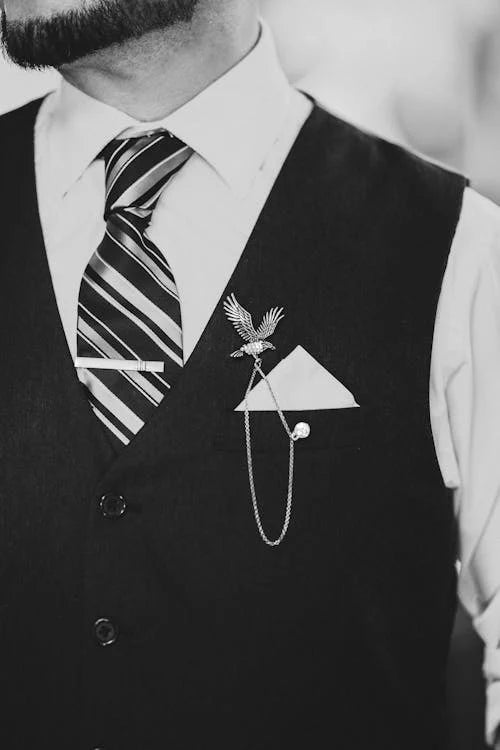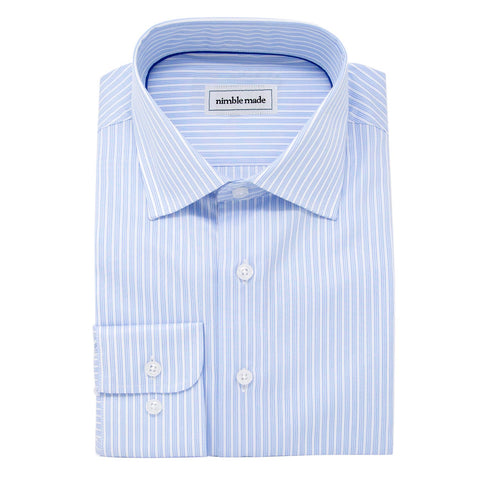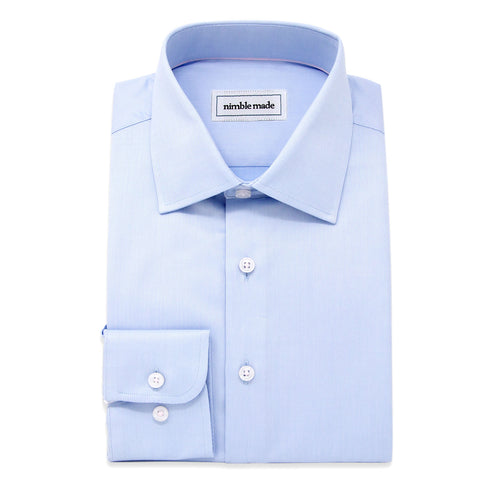
Written by Ben Chuang
Do you know the difference between a waistcoat vs vest? For a long time I used the two interchangeably, although as an American, "vest" sounded more conversational and approachable than its posh cousin, "waistcoat."
For example, imagine if we started calling what policemen wear "bulletproof waistcoats." It just wouldn't sound the same. Semantics aside though, there are subtle differences between the waistcoat vs vest, which we will go over today.
Understanding the subtle yet significant differences between vests and waistcoats is a journey through cultural and clothing evolution. While both garments share a common purpose—to add a layer of style and functionality to one's attire—their distinct characteristics reflect regional preferences, historical influences, and even social contexts.
In this article, we delve into the nuanced disparities between vests and waistcoats, exploring their origins, usage, and the fascinating divergence in terminology between American English and British English.
By unraveling these distinctions, we aim to illuminate the rich tapestry of fashion and language that shapes our understanding of these timeless wardrobe staples.

Waistcoat vs Vest: A Brief History
The history of waistcoats and vests intertwines with the evolution of fashion and social norms across different cultures and time periods. The waistcoat originated in the 17th century and was initially worn as an undergarment by European men.
Made of luxurious fabrics like silk and adorned with intricate embroidery, it served as both a symbol of status and a practical layer to keep the wearer warm during colder outfit seasons. Over time, the waistcoat transitioned into outerwear, becoming a staple of formal attire in Europe and eventually spreading to other parts of the world.
Its design evolved, reflecting changing trends and societal preferences, from the elaborate styles of the Baroque era to the more tailored and understated looks of the Victorian period.
Meanwhile, in America, the term "vest" emerged, likely derived from the French word "veste" meaning jacket or robe. As American English diverged from its British counterpart, "vest" became the preferred term for the sleeveless garment worn over a dress shirt and under a jacket.

While the waistcoat remained prevalent in British English, "vest" became synonymous with the garment in American culture, reflecting the linguistic evolution and cultural nuances that shape our understanding of fashion terminology today.
This linguistic discrepancy also highlights the influence of historical and cultural factors on language, as well as the subtle distinctions in fashion vocabulary between different regions and societies.
What is a Waistcoat?
A waistcoat is a sleeveless garment worn over a shirt and underneath a jacket or coat. Although "waistcoat" and "vest" are often used interchangeably in modern conversational English, a waistcoat refers to formal attire worn with a three-piece suit, while vests have a wider application, such as utility vests.
It typically features a button-up front and a V-shaped neckline, although variations in design exist, ranging from simple and utilitarian to ornately decorated and tailored for formal occasions.

The waistcoat traces its origins to 17th-century Europe, where it initially served as an undergarment worn by men of high social status.
Crafted from luxurious fabrics such as silk, satin, or brocade, waistcoats were often intricately embroidered and adorned with decorative buttons. Over time, waistcoats evolved into outerwear, becoming a staple of formal and semi-formal attire across various cultures.
Their versatility and adaptability have led to their enduring popularity, with modern interpretations incorporating a wide range of materials, colors, and styles to suit different fashion preferences and occasions.
Beyond its aesthetic appeal, the waistcoat also offers practical benefits, providing an extra layer of warmth in cooler climates while adding a touch of sophistication and refinement to one's ensemble.
In contemporary fashion, waistcoats are not only associated with formal events but also frequently incorporated into casual and business casual attire, showcasing their timeless appeal and versatility in the modern wardrobe.
What is a Vest?
A vest is a piece of sleeveless clothing worn over a shirt and beneath a jacket or coat. The term "vest" is predominantly used in American English, and refers to a wider range of apparel that can range from casual attire to formal dress, and may or may not have buttons.

The origins of the vest can be traced back to similar garments worn in ancient civilizations, but its modern form emerged in Europe during the 17th century. Initially worn as an undershirt by men of high social status, vests were crafted from luxurious fabrics such as silk, satin, or brocade and often embellished with elaborate embroidery and decorative buttons.
Over time, vests transitioned into outerwear and became a staple of formal and semi-formal attire across various cultures. Today, vests are valued for their versatility, as they can add a layer of warmth in cooler weather or serve as a stylish accessory to enhance one's outfit.
In addition to formal events, vests are also commonly incorporated into casual and business casual attire, reflecting their enduring appeal and adaptability in contemporary fashion.
Differences Between Waistcoat vs Vest
Beyond semantics, the difference between a waistcoat and a vest lies in their historical evolution, cultural connotations, and regional variations in usage.
A waistcoat is a formal garment often worn with a suit or tuxedo, featuring a more tailored fit and usually part of a three-piece suit. A vest, on the other hand, is a more casual or functional piece that can be worn as part of casual outfits or as outerwear in some styles.
While both terms often refer to the same sleeveless garment worn over a shirt and under a jacket or coat, there are subtle distinctions that reflect the nuances of language and fashion across different contexts.
|
Waistcoat |
Vest |
|
|
Origin |
|
|
|
Formality |
|
|
|
Buttons |
|
|
The term "waistcoat" is primarily associated with British English and carries a sense of tradition and formality, stemming from its origins as a refined article of clothing worn by European nobility in the 17th century. Waistcoats were traditionally tailored from luxurious fabrics such as tweed, adorned with intricate embroidery, and worn as part of formal attire.
On the other hand, "vest" is more commonly used in American English and has a broader connotation, encompassing a wider range of sleeveless garments beyond the formal waistcoat, such as a sweater vest, which can be thought of as a sleeveless sweater (which looks great when worn over a dress shirt).

In American culture, "vest" may refer to both casual and formal styles, and the garment is often seen as a practical layering piece rather than a strictly formal accessory.
Additionally, the term "vest" can also extend to outerwear garments like down vests or utility vests, further broadening its usage. Therefore, while waistcoat and vest may refer to the same garment in some contexts, their differences reflect not only linguistic preferences but also cultural and sartorial nuances that shape our understanding of fashion terminology.
Double Breasted Waistcoat vs Single Breasted Vest
There can be differences in the rows and numbers of buttons between waistcoats and vests, although these variations are not strictly defined and can depend on factors such as fashion trends, personal preference, and the formality of the garment.
Traditionally, waistcoats tend to have more structured designs with a higher number of buttons and often feature two rows of buttons down the front.

This style is commonly associated with formal attire and is intended to create a polished and tailored look. In contrast, vests may have fewer buttons and may feature a single row of buttons down the front.
This design can lend itself to a more casual or contemporary aesthetic, although there is considerable overlap in the button configurations between waistcoats and vests.
Ultimately, the specific number and arrangement of buttons can vary widely based on the designer's vision and the intended style of the garment, making it more of a stylistic choice than a rigid distinction between waistcoats and vests.
How to Wear a Waistcoat or Vest
Styling a waistcoat or vest with a three-piece suit presents an exquisite opportunity to infuse your ensemble with sophistication classic style and finesse. Let's delve into a guide on how to curate a distinguished and refined look:
Selecting the Perfect Fit:
Ensuring that your suit jacket and waistcoat or vest complement each other impeccably is paramount. The waistcoat should snugly button without any hint of strain or gaping, seamlessly covering the waistband of your trousers for a polished appearance. Likewise, the suit jacket should gracefully drape across your shoulders and chest, offering a tailored fit devoid of excess fabric or constriction.

Harmonizing Colors and Fabrics:
Opt for a waistcoat or vest that harmonizes seamlessly with the color palette and fabric texture of your three-piece suit. Embrace classic hues like black, navy, or charcoal gray for timeless elegance, or experiment with textures and patterns such as a tweed or chambray to infuse your ensemble with character and visual intrigue. Read our guide to the best suit colors to have.
Mastering the Art of Layering:
When incorporating a waistcoat or vest into your three-piece suit ensemble, layer it delicately over a skinny-fit shirt paired with a complementary slim tie or bow tie. Ensure that the collar of your shirt sits neatly above the waistcoat, exuding sophistication and attention to detail. Steer clear of wearing a belt with your waistcoat to maintain the streamlined aesthetic of your ensemble.
Adhering to Buttoning Etiquette:
Should your waistcoat or vest feature multiple buttons, adhere to the timeless sartorial rule of leaving the bottom button unfastened. This subtle gesture facilitates ease of movement and prevents the garment from pulling, accentuating the tailored elegance of your attire, irrespective of whether it's single-breasted or double-breasted.
Enhancing with Thoughtful Accessories:
Elevate your ensemble with meticulously chosen accessories that complement its overarching aesthetic. Consider adding a pocket square to your suit jacket for a touch of color or pattern, or adorn yourself with a sophisticated watch, cufflinks, or a tie bar to punctuate your look with refined sophistication and attention to detail.
Completing with Appropriate Footwear:
Complement your three-piece suit ensemble with footwear that echoes its level of formality. Opt for classic dress shoes such as oxfords or brogues in hues that harmonize with your attire, ensuring they are impeccably polished and well-maintained to exude an air of refinement and elegance. Don't forget to match your outfit with some black dress socks. Going for a more casual look? Try one of these business casual shoes.
Personalizing Your Ensemble:
Embrace the opportunity to infuse your ensemble with your personal style by experimenting with different waistcoat or vest styles, colors, and appropriate accessories. Whether you lean towards a timeless and traditional aesthetic or prefer a contemporary and fashion-forward approach, tailor your ensemble to authentically reflect your individual taste and personality.
By meticulously following these styling guidelines, you can confidently wear a waistcoat or vest with your three-piece suit, emanating an aura of elegance and sophistication on every occasion, from formal events to professional conferences and beyond.
Waistcoat vs Vest: Differences in Formality
Vests and waistcoats each carry their own level of formality for various occasions, with waistcoats generally considered more formal than vests. Here's a detailed breakdown of the appropriate occasions for wearing each:
Waistcoat Formality:
Waistcoats are inherently formal garments and are traditionally reserved for a formal event that calls for elevated dress codes. Here are some appropriate occasions to wear waistcoats:

Black Tie Events: Waistcoats are an essential component of black tie formal attire, typically worn with a tuxedo or formal dinner jacket and a crisp white shirt. They add an extra layer of sophistication to formal evening wear and are often crafted from luxurious fabrics like silk or satin. A matching bow tie completes the look. Here's a guide on how to tie a bow tie correctly.
White Tie Events: For the most formal occasions, such as state dinners or royal events, waistcoats are a staple of white tie attire. They are worn with a tailcoat and are typically white or ivory in color, complementing the formal elegance of the ensemble.
Weddings: Waistcoats are commonly worn as part of groomsmen attire for weddings, particularly for formal or semi-formal ceremonies. They add a touch of refinement to the groom's ensemble and can be coordinated with the wedding color scheme or theme.
Business Formal Settings: In certain professional settings, such as corporate boardrooms or high-level meetings, waistcoats can be worn as part of a three-piece suit with a professional dress shirt for a polished and authoritative look. They convey professionalism and attention to detail.
Vest Formality:
Vests, on the other hand, are versatile garments that can span a range of dress codes, from formal to casual. Here are some appropriate occasions for wearing a vest:
Business Casual Settings: In more relaxed professional environments or business casual settings, vests can be paired with dress trousers, a sport coat, and a button-up gingham shirt. They add a touch of refinement without being overly formal.
Casual Gatherings: Vests can also be incorporated into casual outfits for social gatherings or outings. Pairing a vest with jeans or chinos and a collared shirt creates a stylish and laid-back look that is perfect for brunches, parties, or evenings out.
Formal Events with a Modern Twist: For events with a contemporary dress code or a less rigid interpretation of formality, vests can be a stylish alternative to traditional waistcoats. They offer a more relaxed yet still polished option for occasions like cocktail parties, art gallery openings, or upscale dinners.
Layering in Cooler Weather: Vests can be thought of a a sleeveless jacket, serving a practical purpose as an extra layer of warmth during cooler months. Layering a vest under a jacket or over a sweater adds both style and insulation to your outfit, making it suitable for outdoor activities or transitional seasons.
In summary, waistcoats are typically reserved for formal events and settings that require a high level of elegance and sophistication, while vests offer a more versatile option that can be dressed up or down depending on the occasion and dress code.
Frequently asked questions about waistcoat vs vest
What is the difference between a vest and waistcoat?
The primary difference between a vest and a waistcoat lies in terminology and regional usage. In general, they refer to the same garment—a sleeveless upper-body garment worn over a shirt and under a jacket.
However, "vest" is the more commonly used term in American English, while "waistcoat" is prevalent in British English.
Why do Americans call a waistcoat a vest?
Americans typically refer to a waistcoat as a vest due to linguistic evolution and cultural differences. The term "vest" in American English has broadened to encompass various sleeveless garments, including what the British refer to as a waistcoat.
This linguistic discrepancy likely stems from historical and cultural factors, leading to distinct vocabulary preferences between the two countries.
Is it a vest or waistcoat in England?
In England, the garment is commonly known as a waistcoat. The term "waistcoat" has been in use for centuries in British English to describe this particular article of clothing.
While "vest" is understood in England, it's more commonly associated with undergarments or outdoor gear rather than the formal attire typically denoted by a waistcoat.
Is it OK to just wear a waistcoat?
Yes, wearing a waistcoat alone can be perfectly acceptable in certain contexts. Waistcoats can serve as stylish and formal attire when paired with appropriate clothing, such as dress trousers and a button-up shirt.
However, it's essential to consider the formality of the occasion and ensure that the waistcoat complements the overall outfit to achieve a polished and put-together look.






Comments (0)
Back to News